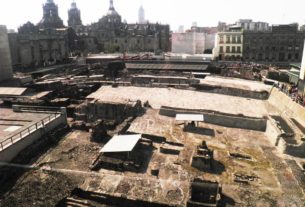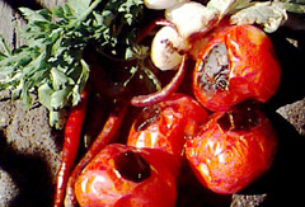The Zona Rosa is located conveniently close to Mexico City’s Centro Histórico . It lies on the northern side of the famous Paseo de la Reforma (a long tree-lined street modeled after the Champs-Elysées with its many historic monuments and traffic circles, referred to here as glorietas. The Zona is also bordered by Chapultepec Avenue to the west and Insurgentes and Florencia Avenue to the west and east. Signs marked Zona Rosa will help you find your way in traffic, or take the metro to Metro Insurgentes.
At the metro station, leave through the exit marked Salida Genova, often crowded with noisy vendors of pirated CDs and other trinkets. From there, walk a few short blocks north. You will know that you have arrived when you find yourself walking along streets that are named after European cities, like Genova, Dublin, Oslo, Hapsburg, Warsaw, and Nice.
The Zona Rosa became an important residential zone at the beginning of the century during the dictatorship of Portfirio Díaz (which ran, nearly uninterupted between 1877-1910). For that reason, houses in the Zona Rosa are often called casas porfirianas. The area was then called la Colonia del Paseo because of its proximity to Paseo de la Reforma. Early in the century, wealthy families, including many prominent financiers of the era, began to move to the French-style mansions in the area.
It was an attractive place to set up a home as it was close to the downtown area, and a straight shot to Chapultepec Castle, where Portfrio Díaz took up residence for a time. In fact, travel between the Zona Rosa and Chapultepec was very convenient.
Between 1891 and 1902, a trolley working on the Paseo de la Reforma provided passengers with a simple way to arrive at Chapultepec. If you want to take the same trip today, you can catch a pesero or one of the many green and gray taxis that can generally be found circulating the Paseo de la Reforma. Unfortunately the street is currently under construction (February 2002). New lamps and sculptures are being installed and the sidewalks along both sides of the street, between the Zona Rosa and Chapultepec Park, are rather torn up – at least temporarily.
The Zona Rosa has been fashionable for decades and is a natural point of interest for foreigners. Around 1968 when Mexico hosted the Olympic games, the area became a popular tourist spot. It was then that the area began to be referred to as the Zona Rosa, which is most often translated as the Pink Zone, but sometimes also as the Rose Zone.
At the time, a good number of the buildings were painted varying shades or pink. Many of these were fashionable restaurants and shops that had moved into the area, making it the posh commercial district that we see today. The Mercado Insurgentes, once a typical food market, began to cater to tourists, selling Mexican folk arts and souvenirs of all kinds. With the growth of commercial activities, many families moved to other expensive residential areas, like the Pedregal and Las Lomas, many of them turning the homes that they left behind into stores or offices. The area is still packed with stores, hotels, restaurants and bars. Though you will probably be able to find most anything you need in neighborhood stores, the area is known for its number of quality antique shops and leather and jewelry stores.
This area, founded by financiers, is also still one of the financial centers of the city. The first branch of Bancomer was located in Genova Street. Citibank has its central offices close by. The Stock Exchange, formerly located downtown, also moved to the area in the 80’s. If you walk through the Zona Rosa during business hours you will find the area buzzing with business people. No matter what time you pass through, you will also likely see foreigners from around the world taking in the sights. The Zona has also become an area of focus for the gay and lesbian communities.
This is a lively place to take a walk, enjoy some shopping, and to enjoy a meal at one of the many restaurants or cafes. Many restaurants are concentrated in a plaza on Genova Street between Reforma and Hamburgo. The plaza is often full of pedestrians as well as vendors selling art, candles, and even fruit on the sidewalk. Konditori, one among many popular restaurants in this plaza, offers a delicious weekend brunch buffet and its outdoor seating allows you to watch the passersby. If you want to visit some good established area restaurants, try Luau (at Niza 38) or Chalet Suizo (directly across the street). Both offer good food at reasonable prices and they have been part of the neighborhood for about forty years.
But be warned. As in many areas with heavy foot traffic, you will likely encounter many beggars. Tourist rip-offs abound. It is advisable to shop around before purchasing souvenirs. In the evening, particularly on the weekends, the area becomes a bit more crowded with people looking for a good time at neighborhood discos and it is not uncommon for young men to hassle people walking in the street, to go to the disco that they are promoting.


